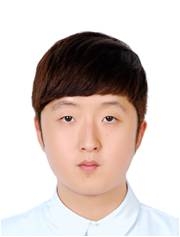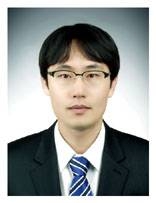Young Scientists
Home
> Program > Young Scientists

- Code / Date
- YS-1 / March 30 (Fri) 08:00-08:06
- Speaker
- Se-Young Jang CV
- Affiliation
- KIST
- Title
- A vinyl Sulfone-Based Fluorogenic Probe Capable of Selective Labeling of PHGDH in Live Mammalian Cells
- Abstract
-

- Code / Date
- YS-2 / March 30 (Fri) 08:06-08:12
- Speaker
- Suna In CV
- Affiliation
- KAIST
- Title
- Identification and characterization of eEF1BδL as a substrate of RNF20/40
- Abstract
-

- Code / Date
- YS-3 / March 30 (Fri) 08:12-08:18
- Speaker
- Nari Seo CV
- Affiliation
- Chungnam National University
- Title
- Quantitation of Serum N-Glycan Isomers for Bechet Disease Monitoring
- Abstract
-

- Code / Date
- YS-4 / March 30 (Fri) 08:18-08:24
- Speaker
- Jinwoo Jung CV
- Affiliation
- Seoul National University
- Title
- PRM and SRM methods to identify prognostic biomarkers of Tocilizumab
- Abstract
-

- Code / Date
- YS-5 / March 30 (Fri) 08:24-08:30
- Speaker
- RAMIN SEO CV
- Affiliation
- Korea Advanced Institute of Science and Technology
- Title
- Establishment of 3-D Cell Culture Model for Liver Cancer
- Abstract
-

- Code / Date
- YS-6 / March 30 (Fri) 08:30-08:36
- Speaker
- Kwang Hoe Kim CV
- Affiliation
- Korea Basic Science Institute
- Title
- Development of Fucosylated Glycopeptides in Alpha-fetoprotein Immunoprecipitated from Serum as a Biomarker Candidate for Hepatocellular Carcinoma by Parallel Reaction Monitoring
- Abstract
-

- Code / Date
- YS-7 / March 30 (Fri) 08:36-08:42
- Speaker
- Hee-Sung Ahn CV
- Affiliation
- UST
- Title
- SEPROGADIC – serum protein-based gastric cancer prediction models for prognosis and selection of proper adjuvant therapy.
- Abstract
-

- Code / Date
- YS-8 / March 30 (Fri) 08:42-08:48
- Speaker
- Seunghyup Jeong CV
- Affiliation
- GRAST, Chungnam National University
- Title
- Aberrant glycosylation is associated with gastric cancer and precancerous diseases
- Abstract
-

- Code / Date
- YS-9 / March 30 (Fri) 08:48-08:54
- Speaker
- Wooyoung Eric Jang CV
- Affiliation
- Kyung Hee University
- Title
- Application of LC-MS/MS to identify biomarkers for autism spectrum disorder using Cntnap2 KO mouse
- Abstract
-

- Code / Date
- YS-10 / March 30 (Fri) 08:54-09:00
- Speaker
- Jong Hyuk Yoon CV
- Affiliation
- Korea Brain Research Institute
- Title
- Multidimensional proteomic analysis for understanding Alzheimer's disease
- Abstract
-

Rm#422, Industry-University Research Bldg., Yonsei University
50 Yonsei-ro, Seodeamoon-gu, Seoul 03722 Korea
Tel : +82-2-393-8328 Fax : +82-2-393-6589 E-mail : admin@khupo.org
COPYRIGHT ⓒ 2018 KHUPO. ALL RIGHTS RESERVED.
